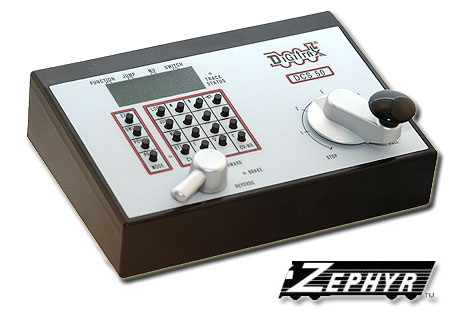
Dispatching is a special feature incorporated in the LocoNet "language" to meet the needs of operators that wish to enforce a strict discipline in how operators gain access to locomotives during an operating session.
Dispatching also lets you run MUs with basic throttles (such as the Utility Throttle series) that can't set up their own MU's and run four digit addresses on basic throttles that only have two digit capability (such as UT1 and UT2). It also lets you have newcomers run trains on the layout without giving them access to the entire operation.
When you dispatch a locomotive address or MU from your LocoNet system, you make it available to be acquired by another throttle. Only one address at a time can be marked as a dispatched address in the system. The dispatched loco address is acquired by the first throttle to request it by pressing the ACQ key to select it for use on that throttle.
To dispatch a locomotive address using a the DCS50:
1. Press the LOCO key, enter the address you want to dispatch.
2. Press to the EXIT key to dispatch it to your LocoNet system, that's all there is to it!
The dispatched address can be a single locomotive address, either two digit or four digit, or an MU. The TOP locomotive in an MU can be dispatched to transfer control of the entire consist to another throttle.